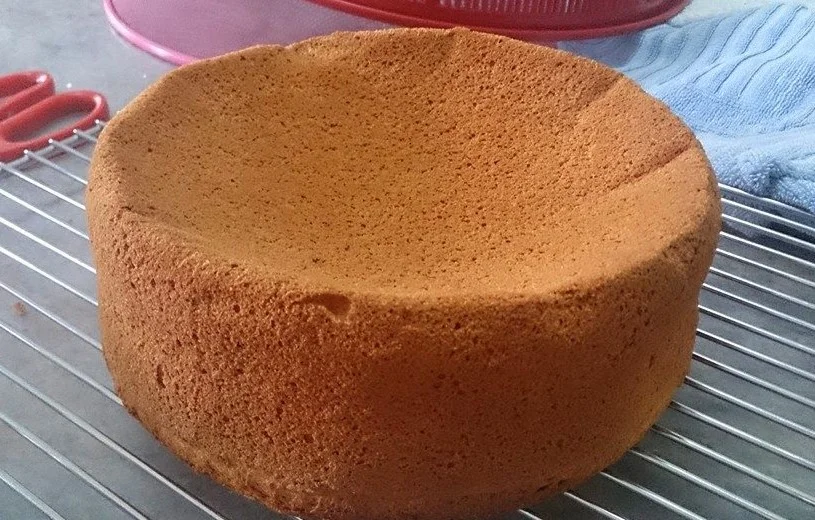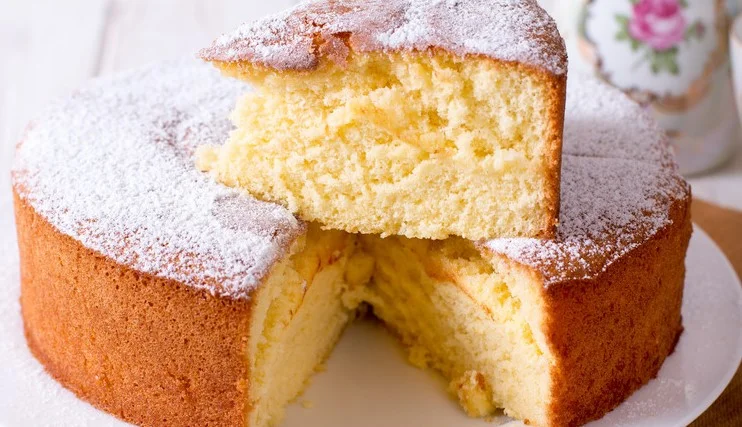Cake manufacturers purposefully cause their products to sink in the center so that it appears that the cake has been a staple of baking for centuries.
People have been trying to understand the sinking cake phenomenon for over a century, and now we finally have the answer.
Why Does Cake Sink In The Middle?
The most common scientific explanation for the sinking cake has been that a change in the density of cake batter from the top side to the bottom side causes it to rise or sink.
But a recent study shows that it’s not the cake batter that sinks, but rather what’s in the batter. The study found that the chocolate layer (the cake’s icing) made the cake drop in the middle.
This contradicts traditional methods of making a glazed cake because no one has ever noticed that underbaking it would prevent it from sinking.

How Do You Stop A Cake From Sinking In The Middle?
The answer is simple all you have to do is underbake the cake. Keep the cake in the oven until it just becomes solid (until it has a smaller chance of sinking).
Then, add an icing of your choice and cook the cake for a few more minutes. You’ll notice that no matter what type of icing you use, the cake will not sink in the center-it will be delicious!
Is A Cake Still Good If It Sinks In The Middle?
Yes, a cake is still good as long as it tastes good. Of course, this depends on what type of cake you make, but if the cake sinks in the middle while baking and you must push it out, it’s not necessarily bad.
The cake will taste fine due to the icing protective layer added to the more dense parts beneath.
Can You Put A Sunken Cake Back In The Oven?
Unfortunately, no, you cannot. The cake will never be as good as when it was fresh. A sunken cake is still good, just not one you can take out of the oven.
If your cake sank in the middle while baking, don’t worry, it wouldn’t always be like that.
How Do I Stop My Sponge Cake Rising In The Middle?
A sponge cake that rises in the middle is not uncommon. Most people want their sponge to increase as much as possible.
If you’re wondering how to stop a sponge cake from rising in the middle, you only have to underbake it.
Underbaking a cake does not mean keeping it in the oven for less time; it means removing it before the cooking process has been completed.
What Happens If Cake Over Bake?
If a cake is overbaked, it can have several negative effects on its texture and taste:
Dryness: Overbaking a cake can cause it to become dry and tough. This is because the moisture in the cake evaporates as it bakes for too long.
Crumbly texture: Overbaking can also cause the cake to have a crumbly or gritty texture, making it difficult to slice or serve.
Burnt flavor: If a cake is left in the oven for too long, it can develop a burnt or bitter taste, which can be unpleasant.
Hard edges: Overbaking can cause the edges of the cake to become hard and crunchy, making it difficult to cut and serve.
Shrinkage: Overbaked cakes may also shrink in size as moisture is lost during baking.
What Does Adding Extra Eggs To Cake Do?
Having eggs in your cake is not a make-or-break decision, but it can help you get the perfect, moist, fluffy cake you’ve always wanted. Adding extra eggs to a cake recipe doesn’t change the flavor much.

The slight difference in taste will be gone by the time the cake goes into storage, or you frost it with buttercream.
Conclusion
The cake sinks in the middle due to the presence of air bubbles. This is because most dough bakes in a convection oven. The cake will fall and be slightly browned on top to counteract this effect.
The result is a cake with a perfectly baked texture with appealing color, instead of undercooked or burnt on top due to condensation from steam venting through the loose dough while baking.